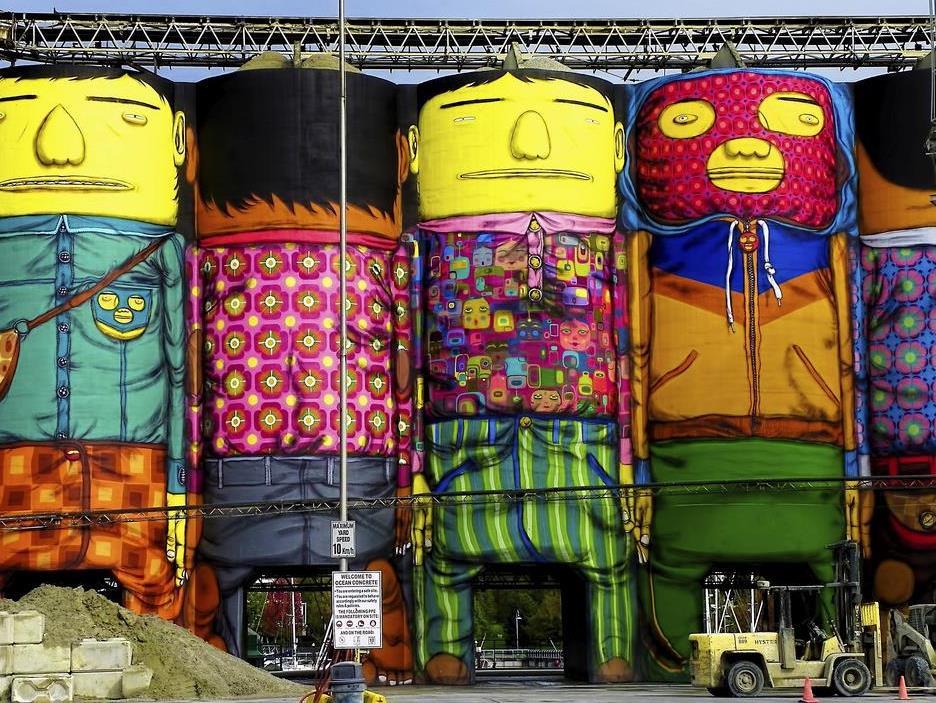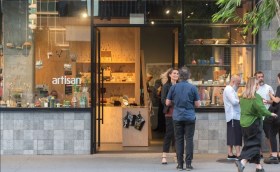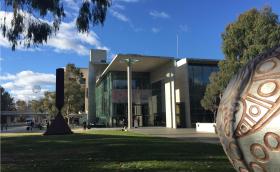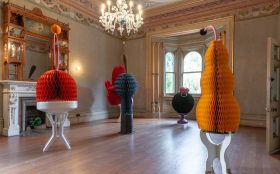Painted storage silos on Granville Island in Vancouver, Canada; Photo: brucecarlson66 www.flickr.com.
Traditional arts training expects students to develop a specialty medium and only later spread out to explore interdisciplinary practice. But in a world where new technology changes potential media every year, locking students into a medium-led practice is limiting.
‘Looking at the industry, we can’t predict what the roles are going to be,’ said Dr Sue Dodd, Head of Communication, Culture and Creative Arts at Victoria University. ‘Even in the three years that the students are doing the degree, the roles that we have in the creative industries are going to change.’
So for its Bachelor of Creative Industries, Victoria University has reversed the linear trajectory to collaborative arts practice by encouraging students to work across media and disciplines from the beginning. The aim is to embed interdisciplinary practice at a foundational level and produce a new cohort of students who will be well equipped to work reflexively within the evolving architecture of the creative industries.
Learn more about the Bachelor of Creative Industries at VU
‘The contemporary state, by nature, is one of interdisciplinarity. Perhaps our traditional approach to expertise within certain areas currently incorporates elements of that, but why don’t we do it the other way around? Why don’t we start with the premise that our creativity is by nature interdisciplinary and let that creative urge drive where the work falls?’ said Dodd.
The new approach is already yielding imaginative results. One student enrolled in the Bachelor of Creative Industries has created false fingernails with electronic codes that activate interactive holograms.
‘She did the whole thing from manufacturing, to producing, to commercially releasing it. She chose Victoria University because she looked at what we were offering and we were the only place where she could really mash it up in terms of what she wanted from a technical background to, at the same time, being able to go and do life drawing,’ said Dodd.
‘We aren’t throwing out the traditional stuff, we are saying “Ok, you can take a traditional life drawing class because there is validity in that as a form that is used to teach us anatomy and science, but let’s look at it with mobile design technology.” So you can combine a life drawing class with creating an app.’
The new structure fosters a more resilient and sustainable practice for emerging artists and arts workers as it prepares them for a future that is constantly evolving in the wake of digital technologies.
‘Students are actually using the fact that they can work across the different disciplines to come up with ideas for things that maybe don’t fit into a specific area, but are creating their own areas,’ said Dodd.
Enquire about the Bachelor of Creative Industries at VU
‘Our students get to create things, but rather than coming from a really specialised emphasis, it’s about being able to create things across a range of different fields. The idea being that we are trying to isolate and identify the capacity to work in a really flexible way.’
When writing the course, a key consideration was training that matched employment outcomes for arts and creative graduates, said Dodd. She found that one third of graduates work in the non-creative industries, one third work for arts organisations in supporting roles and the remaining graduates identify as practicing creatives or artists.
‘We wanted to create a course that was flexible enough for people today that are actually used to multi-modal usages of technology and expressing themselves that would actually support them going into different careers in the creative industry.
‘Education is changing and we need to respond in a way that we provide the kind of input, resources and knowledge to allow students to become really good at learning and adapting to this disruptive environment and finding a way to maintain a new sort of arts practice, a new sustainable, viable way of being creative in the twenty-first century. We don’t know what it’s going to look like.’
To find out more about the Bachelor of Creative Industries at Victoria University, visit https://www.vu.edu.au/courses/bachelor-of-creative-industries-abcr






